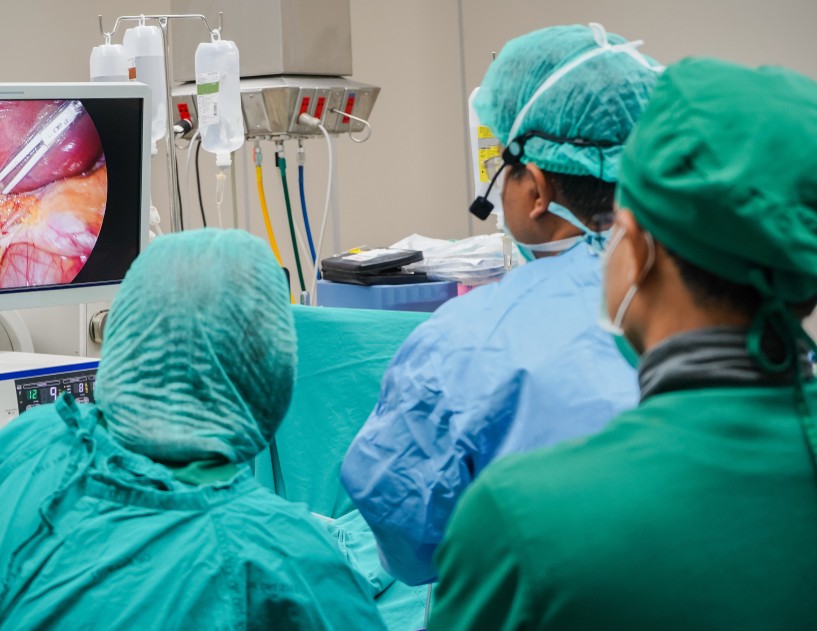Federal program solicits autonomous robotic surgery technology proposals
Editor's Note The US government has launched a new Autonomous Interventions and Robotics (AIR) program to develop autonomous robotic systems that can improve access to remote surgical interventions for thrombectomy in stroke patients and other time-sensitive procedures that not every patient has adequate and immediate access to, according to a…
First transatlantic robotic thrombectomy performed
Editor's Note Doctors from Scotland and the US recently completed what is thought to be a world-first stroke procedure using a remote surgical robot on a human cadaver. A professor testing the remote robotic technology at a hospital in Dundee, Scotland and a neurosurgeon in Florida conducted the thrombectomy on…
Transparent oversight is key to safe surgical innovation

Editor's Note Unchecked surgical innovation can harm patients, derail careers, and erode trust, Bulletin of the Royal College of Surgeons of England October 31 reports. Failures to properly evaluate and monitor new or modified procedures have led to patient harm, surgeon suspensions, and even criminal convictions, per the article, which…
New planning tool aims to boost success of surgical quality improvement projects

Editor's Note A newly developed framework could significantly strengthen the planning phase of small-scale surgical quality improvement (QI) projects, which often falter due to inadequate preparation, MedicalXpress October 16 reports. According to a report from the American College of Surgeons (ACS), published in the Journal of the American College of…
Charlotte surgical institute launches as US hub for robotic, minimally invasive training

Editor's Note A new medical training institute in Charlotte, North Carolina, is positioning itself as a major national destination for robotic and minimally invasive surgery education, Axios Charlotte October 29 reports. The North American headquarters of IRCAD (Institut de Recherche contre les Cancers de l’Appareil Digestif, or Research Institute Against…
Streamlining surgical workflow with better team communication

Effective communication is the foundation of patient safety in the modern surgical environment. Most surgical procedures depend on seamless collaboration among surgeons, nurses, surgical technologists, and anesthesiologists, and when communication breaks down, patient risk rises sharply. In 2024, the American College of Surgeons reported standardized surgical handoffs improved adherence to…
Perioperative leaders gather at 2025 OR Manager Conference

Editor's Note Three days of education and networking await perioperative leaders attending this week’s OR Manager Conference, which runs through Thursday, October 30, at the Anaheim Convention Center in Anaheim, California. By the time Dan Weberg, PhD, MHI, RN, FAAN, takes the stage Tuesday morning with his opening keynote, "Healthcare’s…
Study: One in four US healthcare workers faces food insecurity

Editor's Note Financial hardship is widespread among the US healthcare workforce, with the lowest-paid workers facing rates of poverty and food insecurity comparable to those seen in the general population, JAMA Network October 22 reports. Drawing from 2020–2023 data in the US Census Bureau’s Survey of Income and Program Participation, researchers…
Digital decision aid boosts shared decision-making in knee replacement consultations

Editor's Note A personalized digital tool is helping patients and orthopedic surgeons make more informed, confident decisions about total knee replacement (TKR), according to BMC Health Services Research October 21. Both patients and surgeons reported the EKIT tool—a tablet-based decision aid developed in Germany—improves shared decision-making (SDM), enhances communication, and…
UCSF surgeons spotlight innovation, perioperative research at national surgical conference

Editor's Note University of California San Francisco (UCSF) surgeons and researchers presented a wide range of original work at the American College of Surgeons’ 2025 Clinical Congress in Chicago, held October 4–7. According to an October 7 article published by UCSF, the meeting featured topics from perioperative opioid stewardship and…

 Free Daily News
Free Daily News